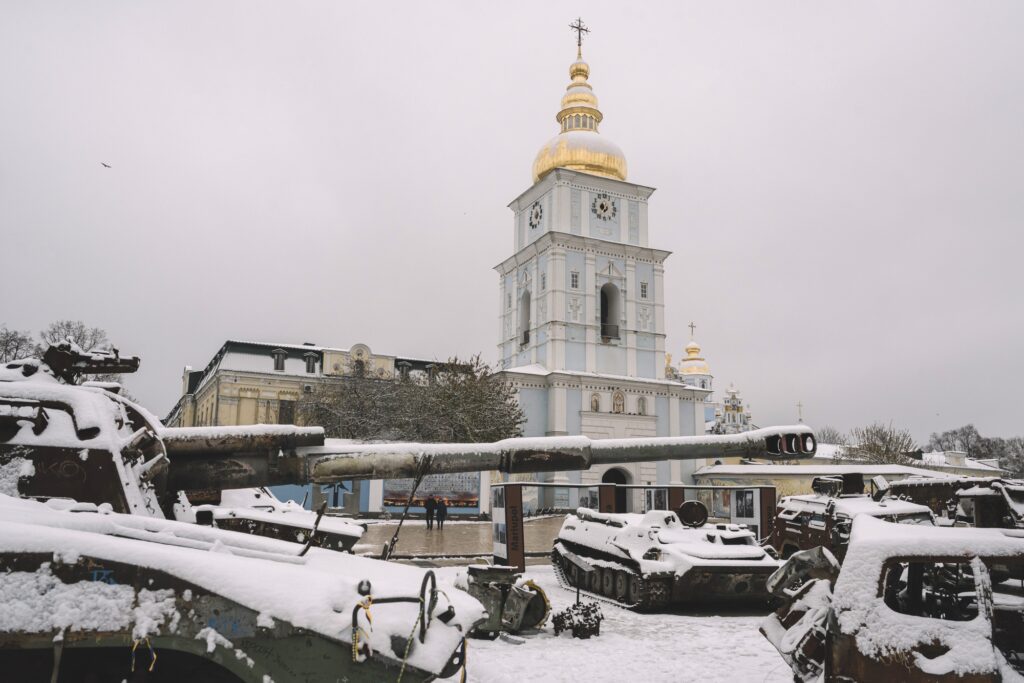Ukraine, at war, is preparing for the arrival of winter. As the fight against the Russian army continues, weather conditions are worsening. A first snowfall hit the south, center and east of the country at the beginning of the week. The bad weather caused power cuts in thousands of municipalities in Crimea, Donbas and the Kherson and Zaporijia regions.
(RFI) On the battlefront in the south and east of the country, Ukrainian soldiers are about to start a new winter in the trenches. Freezing temperatures, snow, humidity and winds make military maneuvers and operations more delicate and put men and equipment to the test.
The absence of leaves on the trees, in predominantly flat terrain, makes vehicles and tanks easy to detect by drones. But in the immediate future, it’s mainly the mud that complicates things. As the ground is not sufficiently frozen, fields and paths become impassable for many vehicles that can’t reach their firing positions or get bogged down while trying to escape enemy fire.
Facing the winter

Last year, military operations continued during the rainiest and coldest months, but Ukraine didn’t have enough equipment to face the winter. This situation allowed Russia to build up an imposing defense in the Zaporijia region, where the counter-offensive launched by Kiev in the spring almost made progress.
For this new winter, the Ukrainian army still needs equipment and ammunition. In recent months, Ukraine’s Western partners have delivered more suitable equipment, such as tracked combat tanks (which increase their grip on the ground), like the German Marder or the American Bradleys. Berlin has also donated 46 Bandvagn 206 tracked troop transport vehicles. Another 14 vehicles of this type are expected to be delivered.
Last year, during the fall and winter, Russia launched a huge wave of attacks on Ukrainian infrastructure, causing significant power, water and heating cuts, and weakening the electricity system. The Ukrainian authorities fear that the scenario will be repeated.
Although the first months of autumn, September and November, passed without large-scale attacks on the power grid, the head of the country’s main electricity supplier, DTEK, Maxim Timchenko, told Reuters that the infrastructure had been the target of approximately 60 attacks in recent weeks.
Another milestone was reached at the end of last week. On Saturday, November 25, Kiev was targeted by more than 70 Russian drones during the night, the largest such attack since the beginning of the war. Dozens of apartment blocks in the capital were left without electricity. The Russian aim seems to be to saturate Ukrainian air defenses and, at the same time, destroy essential infrastructure.
Large but insufficient deliveries of anti-aircraft systems
Thanks to deliveries of American, German, French and Italian anti-aircraft defense systems, the Ukrainian Armed Forces are better prepared to face these attacks and protect their electrical infrastructure. They have systems that can combat threats from low to high altitude.
However, ammunition is still lacking. European missile production is too low to support the current pace of the war. On November 14, German Defense Minister Boris Pistorius said that the European Union would be unable to deliver one million rounds of ammunition before spring, which begins in April, as it had promised. Ukraine needs three million rounds of ammunition a year, while the EU currently produces between 600,000 and 700,000.
